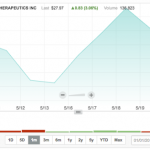Note: This Labor Day commentary has been updated to include Nonfarm Employment for August.
Official recession calls are the responsibility of the NBER Business Cycle Dating Committee, which is understandably vague about the specific indicators on which they base their decisions. This committee statement is about as close as they get to identifying their method.
There is, however, a general belief that there are four big indicators that the committee weighs heavily in their cycle identification process. They are:
The Latest Indicator Data

As the adjacent thumbnail of the past year illustrates, Nonfarm Employment has been in a steady upward trend. Friday’s report of 173K new nonfarm jobs in August was below expectations. However, the July number was revised upward by 44K and June by 28K, which gives us a net gain of 245K for August. The unemployment rate dropped from 5.3% to 5.1%.
The chart below shows the monthly percent change in this indicator since the turn of the century, a period that includes two recessions.

The Problem of Revisions
At first blush this indicator appears to have a strong correlation with the business cycle. However, there is a major problem with this assumption: The data in this survey of business establishments undergoes multiple revisions. The initial monthly estimate is subject to a first and second revision, subsequent benchmark revisions and annual revisions that stretch back five years. The cumulative size of the revisions is quite stunning, much of which is owing to the “hindsight” of those annual revisions.
The chart below measures the size of the revisions from the initial estimate to the latest employment report.

In the immediate context of August, however, the general pattern has been one of substantial upward revisions during business cycle expansions, presumably owing to lower Establishment Survey participation rates during the ultimate summer vacation month. See this overview of August revisions from Calculated Risk.
The Problem of Population Growth
Another problem with the Nonfarm Employment data is that it isn’t adjusted for population growth, which reduces its usefulness in illustrating secular trends. The chart below incorporates a population adjustment by divided Nonfarm Employment (FRED series PAYEMS) by the Civilian Labor Force Age 16 and Over (FRED series CLF16OV). We’ve added a couple of trend lines and pointers — not to suggest a forecast but rather to highlight the potential impact of a near-term business-cycle downturn.













Leave A Comment